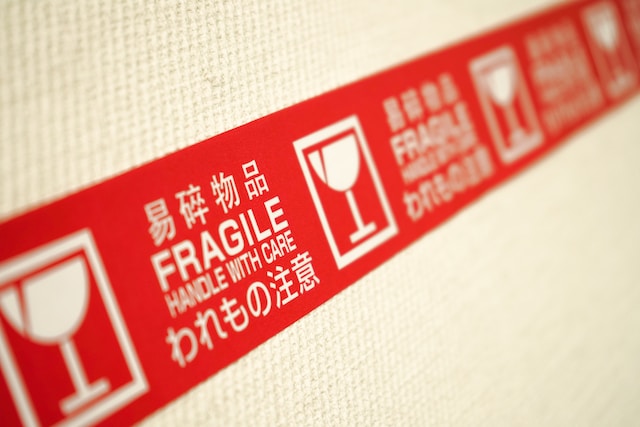When you’re creating and selling candles, ensuring your product meets all legal requirements is just as important as the quality of the product itself. Candle label requirements vary depending on where you’re selling and the type of candles you offer, but every seller must meet specific guidelines to stay compliant with consumer safety standards.
In this guide we cover everything you need to know about candle label requirements, providing detailed insights into the essential elements that every candle label should include, the regulatory bodies involved, and how to avoid common mistakes when designing your labels.
Why Are Candle Label Requirements Important?
Consumer Safety
Candle label requirements exist for one major reason: safety. Candles are both functional and decorative, but they involve open flames and chemicals that can potentially be hazardous. Improper labeling can lead to accidents, and in the worst cases, legal action. Additionally, clear and informative labels help consumers make educated decisions about the products they buy.
During the five years of 2018-2022, there were annual estimated average of 5,910 house fires started by candles in the U.S., causing an annual average of 74 civilian deaths and $257 million in property damage (National Fire Protection Association). This statistic highlights the importance of meeting candle safety regulations and providing adequate warning and usage instructions.
Legal Compliance
One of the key reasons why candle label requirements are essential is to stay compliant with regulations set by government bodies. Not adhering to these rules can lead to fines, recalls, or even being banned from selling candles.
The Fair Packaging and Labeling Act (FPLA) dictates what information companies must include on a product’s outer packaging and main label. These regulations help to protect consumers from misleading or incomplete product information.
Here are the groups that determine the contents of candle warning labels: the National Candle Association (NCA), the American Society for Testing and Materials (ASTM), the Federal Hazardous Substances Act (FHSA), and the Consumer Product Safety Commission (CPSC). The government tries to minimize the potential danger by focusing on safety practices and burning instructions.
Building Consumer Trust
Proper labeling isn’t just about legality, it also builds trust with your customers. When people purchase your candles, they expect you to provide clear information on how to use the product safely. A label that contains all necessary warnings, instructions, and ingredient details shows that your brand cares about the safety and well-being of its customers.
What Types of Labels Are There for Container Candles and Wax Melts?
Outer packaging
Pillar candles and taper candles usually have an outer packaging. Very often candle makers use a box or tube for the outer packaging. In this case, the product information is either printed directly onto the surface or applied as a label.
Primary Label
The primary or the main label is usually attached directly to the candle container or wax melt clamshell. If the label container doesn’t have a smooth surface, candle makers can attach a tag which can become the label.
Warning Label
The third type is the warning label placed on the bottom of the candle container. In case of wax melts warning labels are placed on the inside of the clamshell.
What Elements Must Primary Candle Labels Include?
Knowing what to include on your primary candle labels can seem confusing, especially if you’re new to the business. Here are the mandatory elements that must be included on the labels to meet candle label requirements.
1. Product Identity
The first thing you need is to identify your product clearly. This could be as simple as labeling the product as “Scented Candle” or “Soy Wax Candle.” The FPLA doesn’t require to include the type of wax and scent name, but that information can help consumers to make their buying decisions so you can include those things from a sales perspective.
2. Net Quantity Statement
The net quantity statement tells consumers how much candle product they are getting. It shows the weight of the wax, fragrance, wick, and any dyes used to create the candle but not the container. For example, you might state that your candle contains “8 oz” of wax. In the U.S., the Fair Packaging and Labeling Act (FPLA) requires this information to be included on every consumer product package.
The are also minimum font requirements depending on how large your label is:
- If the label is 5 square inches or smaller, the minimum font height is 1/16 inch
- Labels 5 to 25 square inches have a ⅛ inch minimum
- Anything 25 to 100 should be no smaller than 3/16 inch
3. Manufacturer or Distributor Information
You must provide the name and address of the candle’s manufacturer, packer, or distributor. If your brand manufactures the candles, you must add your business address and name on the label.
Fire Safety Labeling
Adding fire safety information on the label is not required by law. This may come as a surprise considering it is one of the crucial things consumers must be aware of. However, it is highly recommended by the National Candle Association to add safety information on your candle labels for consumers’ safety.
The CPSC and NCA advocate for using these three ASTM-approved statements:
- Burn within sight
- Keep away from things that catch fire
- Keep away from children and pets
Many candle manufacturers also include icons or symbols that communicate these warnings more clearly.
Fire Safety Instructions
In addition to warnings, your candle should include basic fire safety instructions like how long the wick should be trimmed (usually 1/4 inch) and any information about recommended burning times. It’s vital to let consumers know about these practices to avoid incidents caused by improper use.
Designing a Candle Label That Stands Out
Your candle label isn’t just about meeting candle label requirements—it’s also an integral part of your brand identity. Here are some design tips to make your label visually appealing.
1. Clear Typography
Use legible fonts to ensure all mandatory information is easy to read. Avoid overly decorative fonts for essential details like safety warnings.
2. Branding Elements
Incorporate your brand’s colors, logo, and other design elements into the label while keeping the layout clean. Your brand’s visual identity must not overshadow the essential information on the labels.
3. Material Choice
Choose high-quality, durable materials for your labels. Candles are often placed in environments where they may be in contact with moisture, heat, or oils, so your label must be long-lasting.
4. Label Size and Placement
Pay attention to the label size and placement. The label must be appropriately sized for the candle container. Placement is also crucial—vital details like the warning label should be easy to spot without having to turn the candle around completely.
Candle Label Requirements for E-commerce Sellers
If you’re selling candles online, you need to be especially mindful of the information provided not only on the physical label but also on the product page. Candle label requirements should also be reflected in the online product description to ensure transparency and maintain trust with your customers. Make sure to:
- List all safety warnings
- Include clear burning instructions
- Provide ingredient details, especially for sensitive customers
The Role of Certification and Testing
To further assure your customers of safety, consider getting your candles certified by a third-party organization. The National Candle Association offers testing and certification for candles, which can add an additional layer of trust for your customers.
Testing Your Candles
Before labeling your candles, it is essential to conduct burn tests to see how your candles perform under different conditions. For example:
- How long does it take for your candle to melt to the edges?
- Does your wick produce excess smoke?
By testing your products, you can identify any potential issues that could lead to safety hazards and ensure the instructions on your label are accurate.
Understanding candle label requirements is a vital part of running a candle business. From ensuring legal compliance to building consumer trust, your labels serve as both a practical guide for the consumer and a powerful branding tool. By including all necessary elements—like safety warnings, product identity, and net quantity—you will not only keep your business compliant but also provide your customers with the information they need to use your candles safely.
Staying updated with regulations in your selling region and investing in proper label design are key steps in this process.
Now that you’ve learned all the requirements for candle labels, you can start your candle label printing process. This is where you can use our help. Having been in the industry for more than 20 years, we provide quality candle label printing services. We can help you bring your vision to life with labels that meet all legal requirements and stand out on the shelves.



